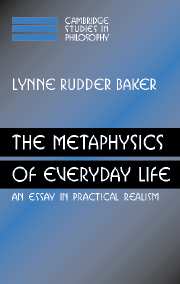3 - Artifacts
Published online by Cambridge University Press: 22 September 2009
Summary
Artifacts are ubiquitous in the world that we encounter. Most broadly, artifacts include everything that is produced intentionally – paintings and sculptures as well as scissors and microscopes. The term “artifact” applies to many different kinds of things – tools, documents, jewelry, scientific instruments, machines, furniture, and so on. Artifacts are contrasted with natural objects like rocks, trees, dogs, that are not made by human beings (or by higher primates). Although the category of artifact includes sculptures, paintings, literary works, and performances, I shall put aside these fascinating artifacts and focus only on artifacts that have practical functions.
My concern here is with an important subclass of artifacts – technical artifacts, the material products of our endeavors to attain practical goals. Such artifacts are objects intentionally made to serve a given purpose. Artifacts with practical functions are everywhere. We sleep in beds; we are awakened by clocks; we eat with knives and forks; we drive cars; we write with computers (or with pencils); we manufacture nails. Without artifacts, there would be no recognizable human life.
Beginning with Aristotle, philosophers have taken artifacts to be ontologically deficient. By contrast, I shall use the Constitution View to develop an ontological theory of artifacts, according to which artifacts are ontologically on a par with other material objects. I shall formulate a nonreductive theory that regards artifacts as constituted by – but not identical to – aggregates of various things.
- Type
- Chapter
- Information
- The Metaphysics of Everyday LifeAn Essay in Practical Realism, pp. 49 - 66Publisher: Cambridge University PressPrint publication year: 2007

